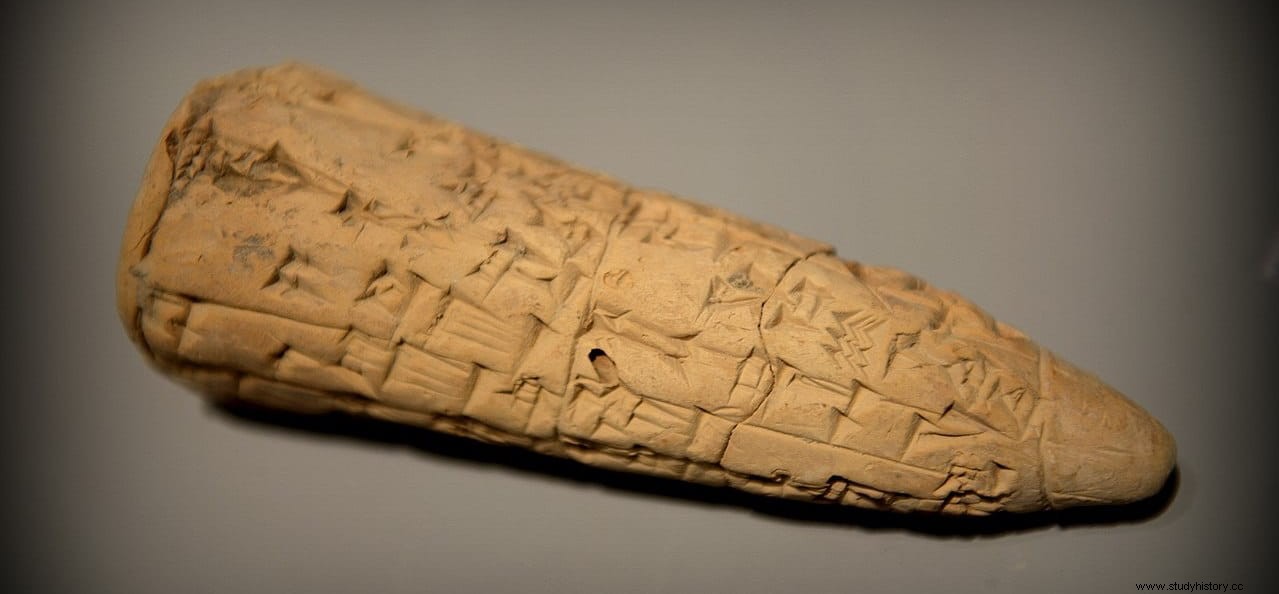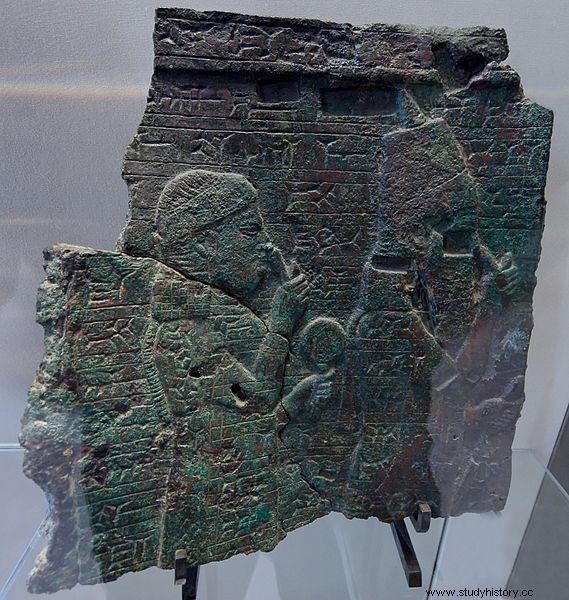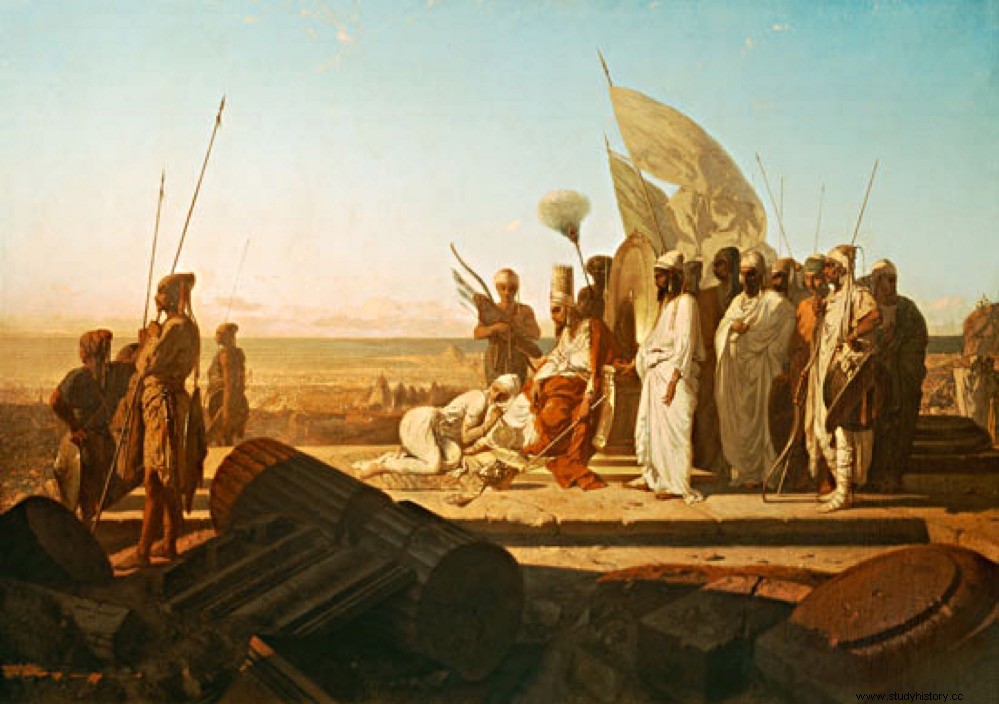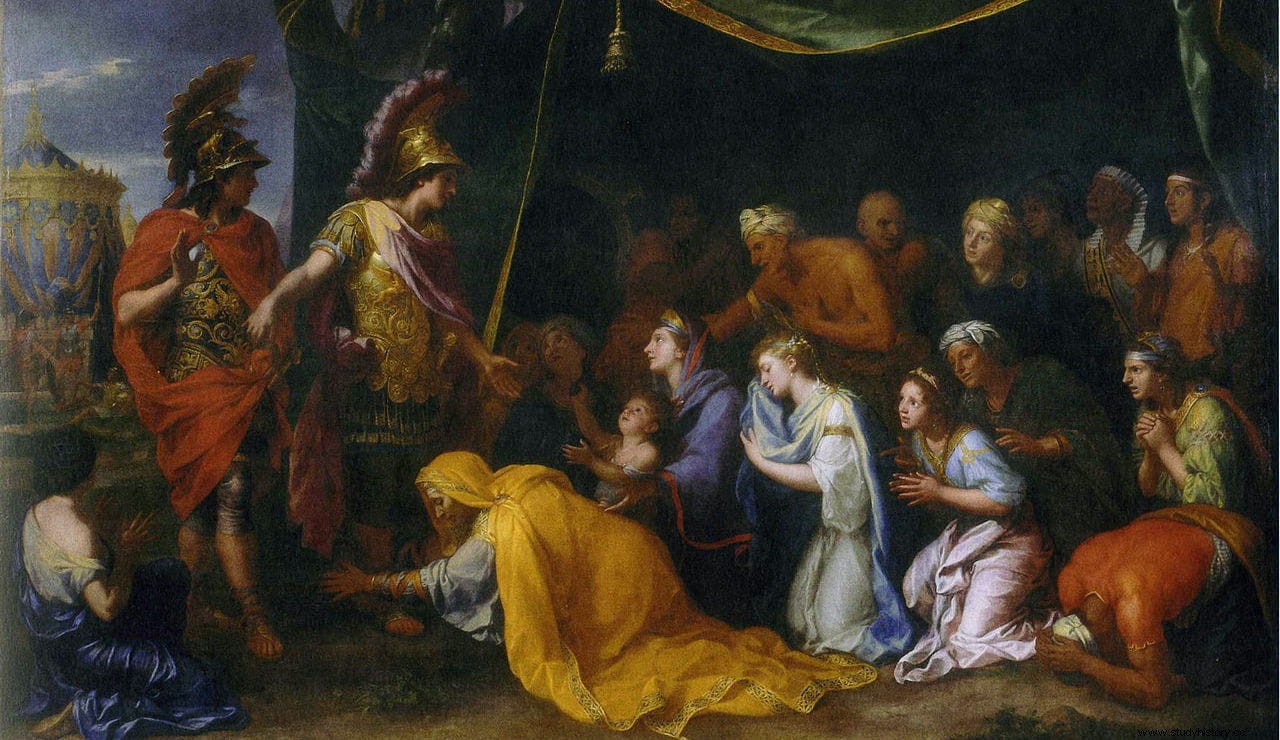Between the years 1805 and 1799 B.C. (according to the short chronology) or 1868 and 1861 B.C. (according to the median chronology) ruled in the Sumerian city-state of Isin, in present-day Iraq (about 32 kilometers south of Nippur) King Erra-Imitti.
His name comes to mean something like follower of Erra , who was a god of war, riots, and political chaos that the Babylonians called the plague god .
After eight years of reign, one day the priests announced that an eclipse was approaching. So Erra-Imitti, as usual, looked for someone who could occupy his throne while the phenomenon lasted, otherwise it would mean death. He found it in one of his gardeners named Enlil-bani.

On the appointed day Enlil-bani was crowned king and sat on the throne awaiting his fateful fate, which was none other than to be sacrificed at the end of the eclipse. But something unexpected happened. While he took Erra-Imitti's place, the latter waited patiently, sipping hot oatmeal. And suddenly he dropped dead. Perhaps because of a heart attack, perhaps for another reason.
The eclipse passed and the priests ordered Enlil-bani to abandon the throne, as he was required. To which he refused, saying that a king had already been sacrificed and, since he had been officially crowned for the occasion, he was the rightful monarch. The priests agreed with him, and he reigned for 24 years.

The story, known only from much later Babylonian copies, may not have turned out exactly like that. In fact, it is a legend, perhaps apocryphal, but whose background reveals a very ancient practice, that of the ritual of the substitute king , a custom reflected in numerous Sumerian texts.
One of them is found on three cuneiform tablets today in the British Museum, published in 1958 in the article A part of the Ritual for the Substitute King by Assyriologist Wilfred G. Lambert.
Because, as we said before, the Assyrians and the Babylonians thought that if a bad omen threatened the king, another (normally a person of low origin, a prisoner or a slave) should sit on the throne to receive that evil, leaving the true king safe.

During the time that the substitution lasted, the new king was granted some liberties, in order to emphasize the supplanting of him, although not effective government power. He could be accompanied by a surrogate queen and have a small court to entertain himself, and the true king was meanwhile called farmer (ikkaru).
We find again the documented use of a substitute king between the years 681 and 669 BC. In that period he reigned in the Neo-Assyrian Empire Asarhaddon, father of what would be the last great king of Assyria, Ashurbanipal. As the prominent British Egyptologist I.E.S. Edwards in his Cambridge Ancient History , several letters of the time mention that Esarhaddon had to resort to a substitute king at least three times during the last years of his reign.
Curiously, not only because of the duration of an eclipse, but also because the substitution lasted for short periods of time, with express mention in the tablets of one that lasted 100 days.
One of these occasions took place on the occasion of the lunar eclipse of Tebetu 15 (month equivalent to December-January) of 671 BC. The tablets also contain the protocol instructions to follow, as well as a description of eclipses of various planets and stars that could cause the need for a substitute, and an allusion to the existence of this institution since ancient times.
One of the tablets also contains a letter sent by the royal representative in Babylon, reporting the disturbances that occurred after the sacrifice of the substitute king and his queen consort. On that occasion it seems that the substitute, called Damqî, was not someone insignificant, but the son of the chief priest of Esagila, the temple of Marduk in Babylon. He had been chosen to replace Shamash-shum-ukin, son of Asarhaddon who ruled Babylon, and the election must have been a means of sowing panic among the Babylonians, who were resisting Assyrian rule.
Almost two centuries later, it seems that the Persians maintained the custom, since Herodotus counts as Xerxes, before invading Greece in 480 BC. and harassed by terrible dreams, he resorted to the same ruse, seating his uncle Artabanus on the throne. Interestingly, another Artabanus, commander of the royal guard, was the one who killed Xerxes.
Although reluctant, remember what it meant to be a substitute king, Artabanus acceded to the wishes of Xerxes and took the throne, as Herodotus goes on to say:

Although this episode does not represent a genuine example of the ritual, it does contain elements that suggest that it may be a variation of the same custom.
And even in the time of Alexander the Great an event occurred, for the Greeks, absolutely exceptional. It is told by the Greek historian of the 2nd century AD. Flavius Arianus in his Anabasis of Alexander the Great :
It happened in May 323 BC, shortly before Alexander left Babylon for Arabia. The Greeks did not understand what had happened, but the explanation is simple:that man was not trying to usurp Alexander's throne, quite the contrary. Following the ancient custom of the substitute king he tried to attract upon himself any evil that might lie in wait for the Macedonian.
Babylonian astrologers had probably announced an eclipse, making the figure of the substitute king necessary. . The eunuchs were aware, they knew what had to be done, and so they did not kick out the usurper of the throne. However, the Greeks had no idea what was going on.

Finally, Old Testament scholar and Wheaton College professor John H. Walton, whose working interpretation of Genesis is controversial among creationists, also addressed the substitute king ritual. in an article published in 2003 in the Journal of Biblical Literature .
In it he states that the Songs of the Servant , a set of texts present in the Bible in the Book of Isaiah that speak of a servant suffering redemptively, can be interpreted in the light of ancient Mesopotamian tradition:
If we take into account that in the Songs of the Servant this character is called the Servant of Yahweh , and that the traditionally accepted Christian interpretation applies this set of prophecies to Jesus of Nazareth, Walton's theory, if correct, could have implications far beyond the Old Testament. But that is another topic.
